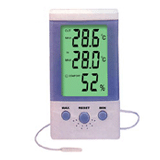Chamelio
New Member
Hey, This is my first post and i have to say from being around about a week i have learned a whole lot, this is really a great and helpful site.
I just bought me a Chameleon, I forgot which type. It cost me 200 and has no horns if that helps any. It is a 3/4 full size male. I have him in a 55 gallon tank with the repti rug felt stuff and lots of fake plants and vines and good climbing logs. I have 2 150 watt heat lights on each half of the aqaurium. I was told to give him water is to get a spray bottle and spray water on the side of the tank, and i was told to feed him mealworms at night (4-6). I was wondering if i am off to a good start with it and is there anything i am missing.
I was also told to turn the lamps off during the night and turn them back on around ealry morning to keep stress down. I was wondering which other foods or fruits are good for it?
I just bought me a Chameleon, I forgot which type. It cost me 200 and has no horns if that helps any. It is a 3/4 full size male. I have him in a 55 gallon tank with the repti rug felt stuff and lots of fake plants and vines and good climbing logs. I have 2 150 watt heat lights on each half of the aqaurium. I was told to give him water is to get a spray bottle and spray water on the side of the tank, and i was told to feed him mealworms at night (4-6). I was wondering if i am off to a good start with it and is there anything i am missing.
I was also told to turn the lamps off during the night and turn them back on around ealry morning to keep stress down. I was wondering which other foods or fruits are good for it?





